 | ||
| Battle of the Frontiers - Lorraine and Ardennes |
| World War One - The War To End All Wars |
Missed Chances, and a French Disaster
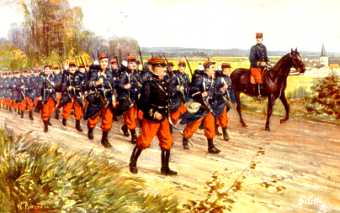
From the 20th to the 24th of August 1914, the fighting was extremely fierce on the Western Front, in four battles that came to be known as the Battle of the Frontiers.
The first battle was in Lorraine, where fighting had been going on since August 14. By early morning 20 August, the French 1st Army under General Dubail and the 2nd Army under General de Castelnau had vainly tried to assault German positions at the expense of a river of French blood.
At Sarrebourg and Morhang, the French found German defenses well prepared. Plan XVII proved to be a dismal failure. The French tactics of assault were disastrous against the barbed wire, artillery, and entrenched machine guns of the German defenses.

French generals, when envisioning Plan XVII, believed the weight of a massive assault would trample anything in its path. The general staff believed that a 20-second charge could cover 50 meters before the enemy could shoulder their rifles and try to repel the charge. With enough men, a charge that had already made 50 meters had too much momentum and could not be stopped. Alas, the German machine guns only took about 8 to 10 seconds to lay down a lead curtain of bullets, decimating whole lines of attacking French.
The French planners also believed that artillery fire would cause an enemy to take cover. This would allow the attack to progress. Once again, the French planners had blundered. If her generals had studied modern warfare tactics better, they would have learned a lesson from the Russo-Japanese War (1904 to 1905), where under fierce artillery attack, the well-entrenched Japanese Army behind parapets were able to fire through rifle holes directly into attacking Russian lines.
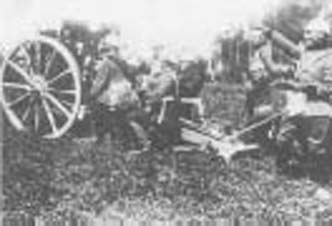
Midday 20 August: Despite being beaten back and bloodied, the generals ordered the attack to continue. With no supporting artillery, the French attacked the fortified German lines near Morhang. XX corps led by General Foch and Castelneaus 2nd Army spearheaded the attack. The results proved disastrous. Under their beloved leader, Prince Ruppercht, the Bavarians mounted a counter-attack. German artillery smashed a hole through French lines, and the Bavarians plunged through the gap. Now in French territory, to the cry of anti-French slogans, national pride swelled in the Bavarians and things quickly got out of hand. A frenzy of looting, shooting, and burning began that reached a head at the town of Nomeny in the Moselle Valley. Some 50 civilians were killed, shot, or bayoneted, and any house that had not been destroyed by artillery fire was burned on order of Colonel von Hannapel of the 8th Bavarian Regiment.
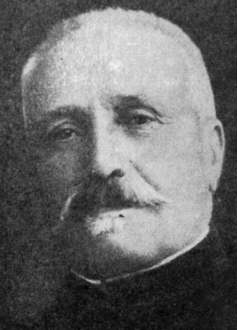
Castelnaus' army was now being attacked on its left flank and having already committed his reserves the general relized the futility of further attacks and began to pull back. Now the French were forced to take a long hard look at Plan XVII, the grand attack, and realize that an offence is only as strong as its defense, and with no defensive positions to fall back on the attack was worthless.
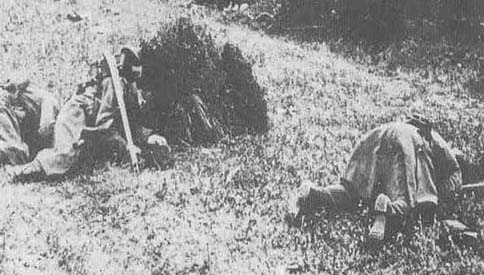
On 20 August, along with thousands of other French, including general de Castelnaus' own son, Morhang became the final resting place for Plan XVII.

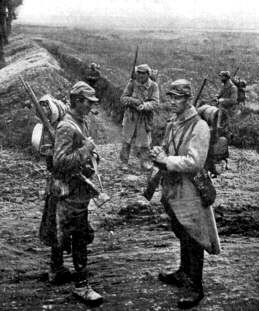
20 August: French Grand Quartier General (GQG), assuming that reported enemy movement across the front was the Germans heading for the Muse, concluded that this left the Ardennes only lightly defended. Immediately they began to draw up plans for a surprise attack in that region. Joffre forbade infantry recon because of the possible detection of these forces. He wanted to protect the element of surprise, but without proper recon much of the surprise would be on him.
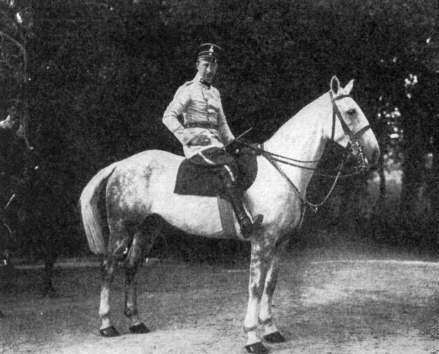
The bottom corner of the Ardennes meets France at the upper corner of Lorraine. This area is known as the Briey Iron Region and had been occupied by Prussia in 1870. Iron ore had not yet been discovered in the region so Germany did not annex it as part of Lorraine after the Franco-Prussian War. The center of the iron region is Longy, on the banks of the Chiers. Crown Prince Wilhelm, commander of the German 5th Army was given the task of taking this area. The Crown Prince had been raised for military service and had some smaller commands but nothing of this stature.

The role of the German 5th Army, along with 4th Army, commanded by Duke Albrecht of Wuerttemburg, was to be the "pivot" of the right wing as it swung out to envelope the French Army. The 4th Army was to attack through the northern Ardennes against Neufchateau, while the 5th Army would attack the southern Ardennes against Virton, and the two French fortress towns of Longy, and Montmedy.
Opposite the Crown Prince was French general Ruffey commander of the French 3rd Army. He was an advocate of heavy artillery and a man of great vision. He had purposed as early as 1910 that France should build an air force of 3,000 planes. Other Generals such as Foch thought this preposterous. He was also criticized for excepting advise from members of his staff, and was prone to speaking his mind.

Ruffeys HQ was at Verdun and his job was to push the Germans back to Metz-Thionville and take bake the Briey region to the right. While this was taking place the 4th Army under General de Langle de Cary would attack on the left and in classic "pinchers" chop the right wing from the body of the German Army.
General de Langle Was anxious indeed, a high-strung man, he was ready to leap head long into action despite disheartening reports of his cavalry being forced to retire from combat near Neufchateau, and reports of German concentrations in the woods around Ardennes
General Ruffey was more worried by these reports than general de Langle, and he took them very seriously. He had also gathered reports from fleeing Belgian refugees of the size of the German forces in the woods and relayed these reports to French GQG. They ignored these reports and Ruffy was later quoted as saying "They never even read them"*.

The attack was on for August 21st. The fog was thick in the Ardennes that day. The Germans had been slowly moving up since the 19th, and had entrenched positions as they went. They were expecting the French to attack but they did not know where. Through the dense fog a French cavalry petrol was sent out to scout the German positions. The fog blanketed the earth like the breath of God and the scouts could see nothing. The advancing German Army could see only two or three steps ahead and before they knew what happened the enemy was upon them. Immediately the French attacked, but were mowed down by German machinegun fire. Likewise the German troops stumbled out of the fog and were slaughtered by French 75mm guns.

By August 22nd the lower Ardennes were engulfed in the flames of full-scale war. All at once several battles were taking place. Virton, Tintigny, Rossignaland, and Nefchateau. Cannons roared, machineguns clattered, and rifle fire filled the air. Bodies fell, men hurled themselves at each other in desperate attempts to gain the upper hand, the screams of the wounded consumed the battlefield, and the dead lay in piles on the blood stained ground.
At Rossingnal the valiant Algerians of the French Colonial Division were surrounded by the 6th Corp of the Crown Prince's Army. Outnumbered they fought a brave and heroic battle until only a handful remained. Divisional Commander General Raffenel and brigade commander General Rondoney were both killed. These men were no "desk jockeys" but fighting generals respected by their men and they lay dead next to those men.
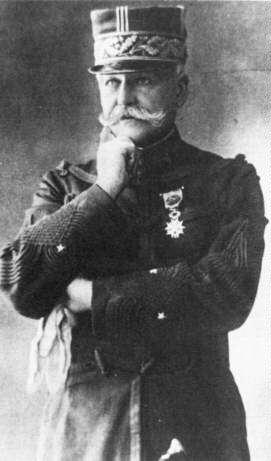
Virton seemed the only bright spot for the French. General Sarrail commander of the French 6th corps led an attack that outflanked the Germans thanks to the firepower of the French 75mm field guns. One French officer reported after the battle, "The battlefield afterwards was an unbelievable sight"*, "Thousands of dead were still standing, supported as if by a flying buttress made of bodies laying in rows on top of each other in an ascending arc from the horizontal to an angle of 60 degrees"*.
General Ruffy needed reserves, but before the battle Joffre had taken 50,000 men to form a rear guard to protect the right flank. In the end this saved the retreating French, but General Ruffy insisted had he had these forces he would have won the battle. Ruffy, no longer able to contain himself exploded on a staff officer from GQG shouting, "You people at GQG never read the reports sent you. You are all as ignorant as oysters of all that the enemy has in its bag. Tell the Generalissimo his operations are worse than in 1870-he sees absolutely nothing-incapacity everywhere"*. When Joffre received this message he began to lay the blame on the commanders in the field.

The day drew to a close and news of the disaster began to reach French GQG. Stories of the men of the Algerian Colonial Division became known, how they fought bravely with valor and how the died with honor. And how France had lost the lives of two brave generals that day. Another corps was in retreat; Joffre read incoming reports "Serious check at Tintgny"*, "All troops engaged with unsatisfactory results"*. Disintegration made it impossible to give orders to retreating forces. Joffre still refused to believe how bad it could be.
August 23rd saw more fighting, but by now it was clear the mighty lance of the French Army had broken against German steel
|
|
|||||||||
|
|
|||||||||
 For more pictuers on The Battle of the Frontiers and World War I in general see A Photo History of World War One By Philip Haythornthwaite World War One in Photographs BY Adrian Gilbert, Consultant Editor John Terraine *= Quotes from the Guns of August, by Barbara W. Tuchman Special thanks to, 
| |||||||||